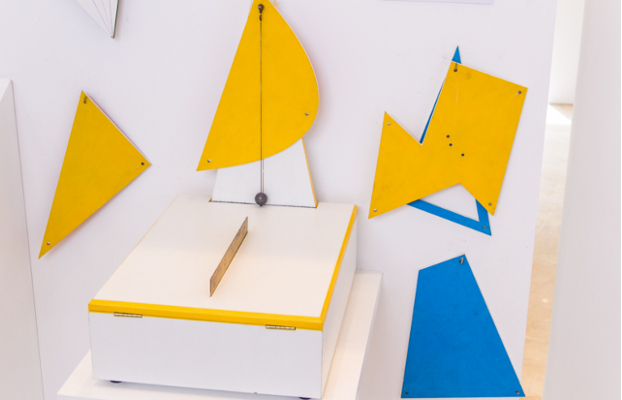CENTER OF MASS OF FLAT FIGURES
We will indicate two ways to determine the center of mass of plates from their physical properties.
For the first, hang the figure on a peg. Then use the plumb line to mark a vertical line on the board. Repeat the process by hanging the plate in another position. There you are, the intersection of the two lines is the center of mass!

The second uses a metal plate to balance the figure in two different positions, marking the position of the metal plate. Again, the intersection of the lines is the center of mass!

However, the center of mass can also be determined mathematically, based only on the shape of the plate (assuming it is homogeneous). For a triangular plate, for example, it is the meeting point of the medians, that is, the barycenter of the triangle. For a polygonal plate, it can be determined by decomposing the polygon into several triangles and then weighting the centers of mass of each by their areas.
In the figure below we see 3 copies of a quadrilateral. In the first one, we divided it into two triangles and found their centroids by meeting two medians. The red segment between the two centroids must contain the plate's center of mass. We do the same with another division into triangles and from there we deduce that the center of mass is in the green segment. Conclusion: the center of mass is the intersection of the green and red segments.

